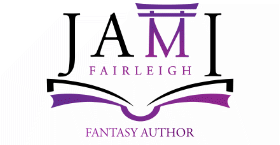
Purple Prose: What is It?

One of the shiny writer toys I’ve put away is purple prose. As a recovering (reformed?) former pantser, I don’t write to describe a scene, I write with my focus on the purpose of each scene. My writing thus marches ever on toward the moment where I get to write the most magical words ever- The End.
“Purple prose?” I hear you ask.
Yes indeedy. Purple prose, that ornate and flowery language with which [some] writers paint their worlds. This post is focused on purple prose, which requires a discussion of beige prose (plain words- simple, short, common) and we will not be covering blue prose (profanity) today, but we may later. Maybe.
What Purple Prose Is
So-called purple prose focuses on the poetry of language. It often uses little-known words, descriptive metaphors, and creates language that is dense and chewy. Critics will say that its too formal, pretentious, and needlessly poetic. Fans will say its intellectual and literary. Here are some examples:
“Four p.m. is like a basement. Wholly innocent in theory. But if you really think about a basement, it is cement poured over restless earth. It has smelly, unfinished spaces, and wooden beams that cast too-sharp shadows. It is something that says almost, but not quite. Four p.m. feels that way, too. Almost, but not quite afternoon anymore. Almost, but not quite evening yet. And it is the way of magic and nightmares to choose those almost-but-not-quite moments and wait.”
― Roshani Chokshi, Aru Shah and the End of TimeHis skin, white despite the faint flush from yesterday’s hunting trip, literally sparkled, like thousands of tiny diamonds were embedded in the surface. He lay perfectly still in the grass, his shirt open over his sculpted, incandescent chest, his scintillating arms bare. His glistening, pale lavender lids were shut, though of course he didn’t sleep. A perfect statue, carved in some unknown stone, smooth like marble, glittering like crystal.
― Stephanie Meyer, Twilight
What Purple Prose Isn’t
The opposite of purple prose is beige or simple prose. It is direct, it uses common words, and its often viewed as accessible. When you see book reviews that say the story was an easy or fast read, the writing was clear, or the story was concise and effective, that typically means the writer skewed toward simple prose. Critics of beige prose will say the writing comes across as drab and stilted, dull and vague. However, there are plenty of classics and best sellers that have been written in beige prose. Here are some examples:
We went tiptoeing along a path amongst the trees back toward the end of the widow’s garden, stooping down so as the branches wouldn’t scrape our heads. When we was passing by the kitchen I fell over a root and made a noise. We scrouched down and laid still.
― Mark Twain, The Adventures of Huckleberry FinnWe’re on a flat, open stretch of ground. A plain of hard-packed dirt. Behind the tributes across from me, I can see nothing, indicating either a steep downward slope or even a cliff. To my right lies a lake. To my left and back, sparse piney woods. This is where Haymitch would want me to go. Immediately.
― Suzanne Collins, The Hunger Games
My Thoughts on Purple Prose
Like most things, I think the “best” writing probably lies somewhere in the middle, and greatly depends on your audience. If you’re writing a non-fiction book, you likely want to steer toward the beige side of the spectrum. For a literary novel aimed at impressing the Intelligentsia, you’re going to need metaphor and beautiful language. If you’re between the ends of the spectrum, you’re probably playing with shades of mauve; perhaps keeping action sequences compact and simple, but the emotional responses to the disasters colorful and comprehensive.
My friend Marcus has put out a video where fourteen writers talk about whether they prefer, and/or write with, purple prose. I’ve started this video snip right where I start talking because someone complained about the length of the previous videos I’ve shared (Yeah Adam, I’m throwing shade at you) but I encourage you to start the video at the beginning, and while you’re there, be sure to like, subscribe, and comment on the Idiot on the Writer’s Block channel!
Do you tend toward purple prose in your writing? Do you like to read purple prose?
Header Photo by Katrin Hauf on Unsplash

Such a wonderful piece on Beige, Mauve and Purple Prose. If my video hadn’t convinced me, this blog certainly did. I’m between beige and mauve for sure!.
And hello Adam! I will make shorter videos going forward, but surely you can see how difficult it is to cut down the videos when brilliant experts such as Jami drop pears of wisdom on me…
See Adam? It’s not just about you.
I hadn’t heard of purple prose, and really enjoyed your post. Thanks for the information and the example were truly colorful.
Thanks Krista! It’s nice to get your feedback.
Heard the term ‘Purple Prose’ on Jeopardy last night and noted to look it up.
Not only that, but I found your whole blog too. When I have time I’ll click around more later.
Thank you for the resource!
Wonderful! Welcome Ken.